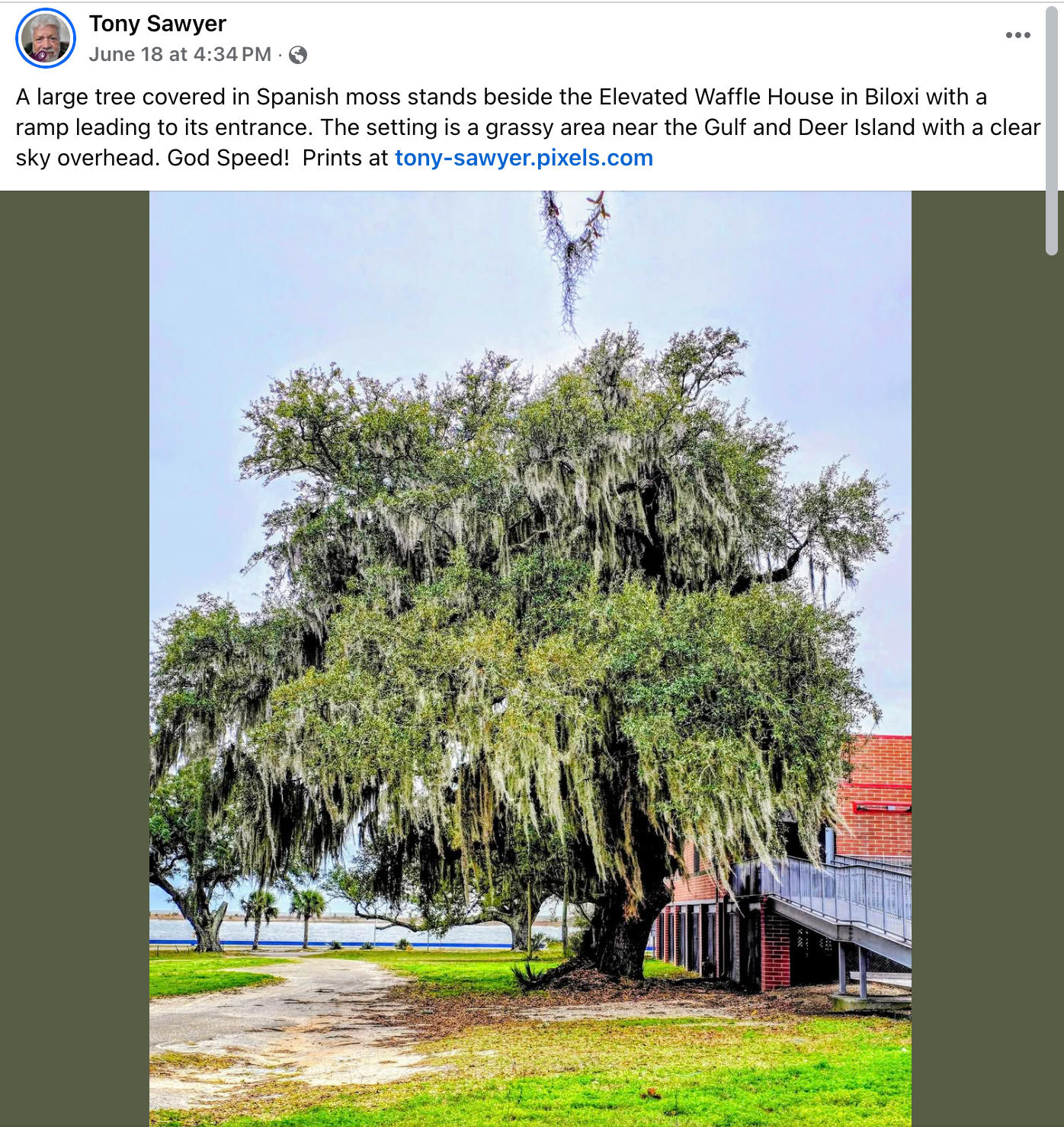
When Tony Sawyer snapped what would become the last known photo of this majestic oak on June 18, 2025 he had no idea it would ignite a firestorm of intrigue and outrage. A longtime resident of Biloxi, Mississippi, Mr. Sawyer has spent the past five years sharing stunning images with his social media followers — capturing the beauty of local wildlife, historic architecture, and the breathtaking sunsets that grace this quiet coastal Southern town that sits along the Gulf of Mexico.
Just a few days later, on June 21, 2025, she was gone. Without warning and in a shocking display of utter disregard for the Biloxi community, this remarkable and magical tree, so eloquently captured by Mr. Sawyer, was cut down.
For years, she had been a beloved presence — her vibrant, healthy limbs, draping with Spanish Moss, stretching wide over the field and nearby buildings, offering the kind of quiet beauty only Mother Nature can bestow. Residents and visitors alike admired her grace and loved to watch the moss swaying in Gulf Breeze, or sit quietly under her shady branches, a welcome respite from the Southern heat. She wasn’t just a tree; she was a living ecosystem, a haven for countless birds and wildlife who found safety and shelter in her strong, enduring branches.
This tree had weathered numerous hurricanes and stood as a symbol of Biloxi’s resilience — especially poignant in a city that was Ground Zero for Hurricane Katrina. Her removal struck the community deeply. The loss wasn’t just physical — it felt like a betrayal of the very spirit of Biloxi.
Adding to the heartbreak is the fact that Biloxi passed an ordinance just a few years ago specifically to protect its iconic live oaks. When we bought our home in March 2023, for instance, we were immediately informed that the eight live oaks on our property were not to be touched. The city’s rules are strict and unwavering — even on private land, no changes can be made to these trees without full compliance from the protective ordinance. So how, then, was this irreplaceable tree so carelessly and suddenly destroyed?
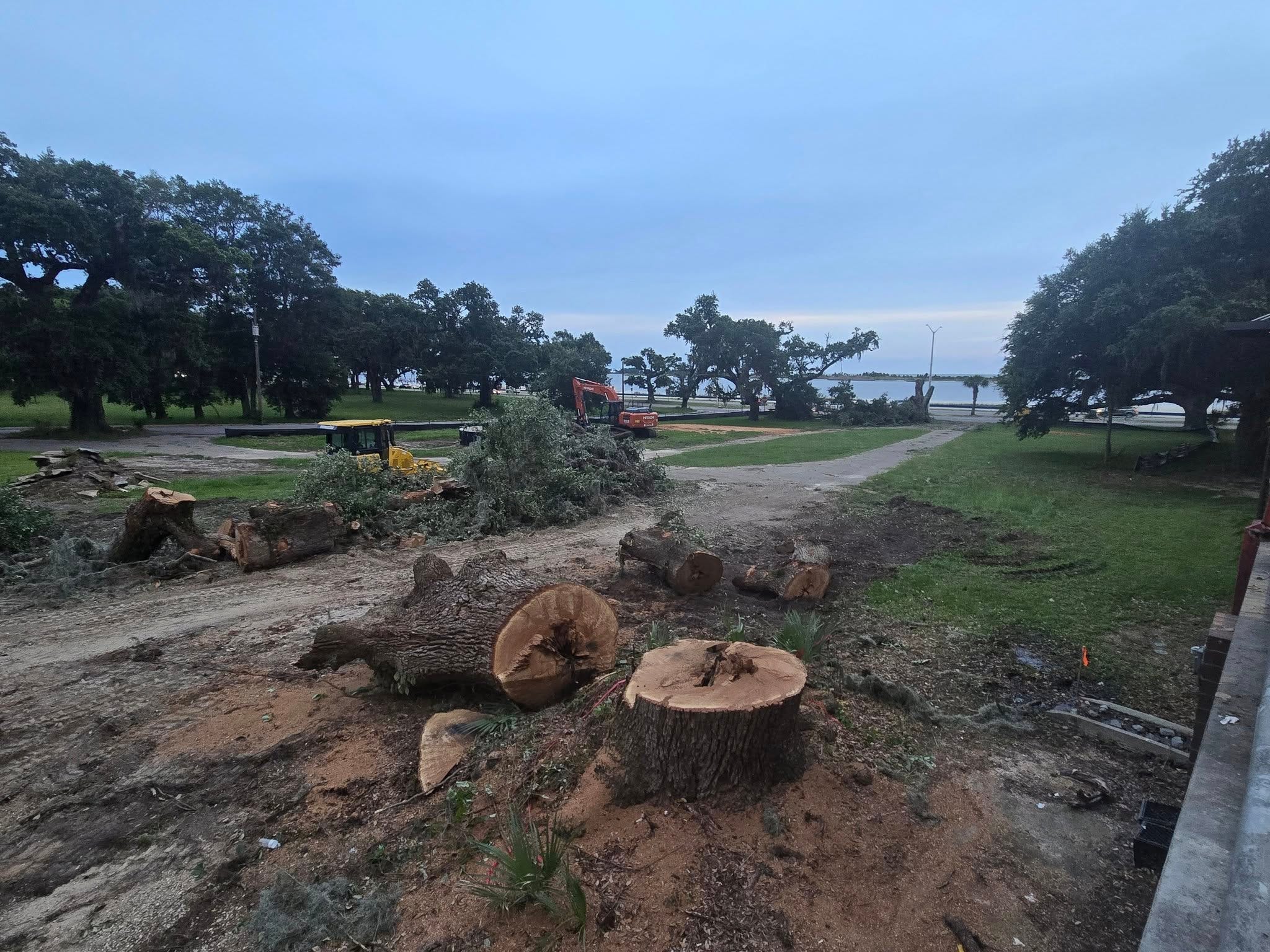
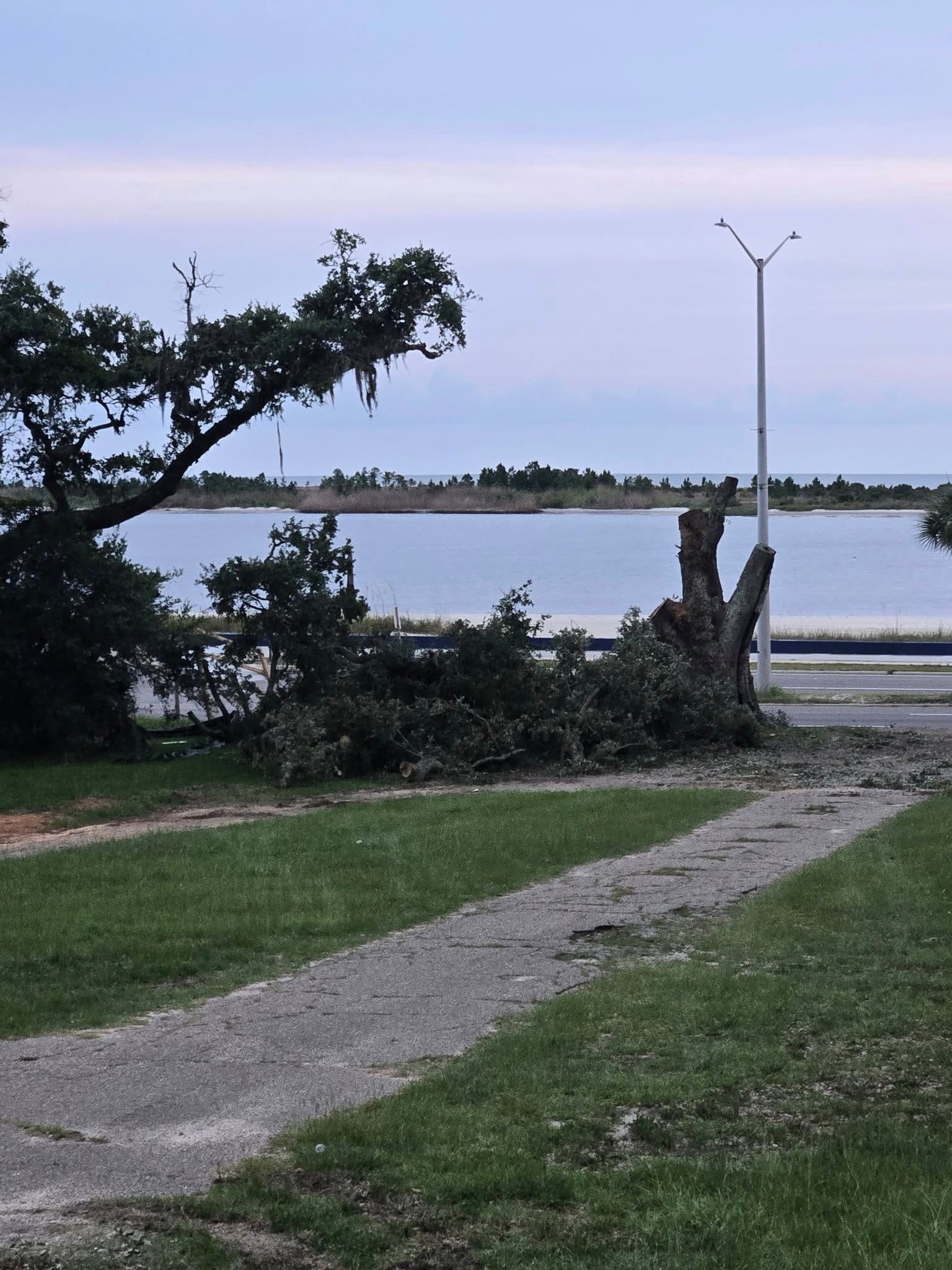
Just one week before Tony Sawyer captured the last known photo of this iconic tree, the local news station WLOX aired a story on June 11, 2025, highlighting a groundbreaking ceremony for the build-out of a new “Home2Suites by Hilton.” The hotel is slated to be built on the very spot where this majestic live oak once stood.

Without any public input or community engagement, the City of Biloxi brokered a deal with an investment and development group based in Ridgeland, Mississippi — an entity with no ties to Biloxi and seemingly no regard for the cultural and ecological significance of the coastal city’s historic live oaks. Led by the Patels, this group has offered no evidence that they verified wth the City of Biloxi whether the tree was protected under Biloxi’s tree ordinance before it was destroyed.

In a move that felt both calculated and careless, the tree was destroyed on a Saturday — when city offices like Code Enforcement were closed and unable to intervene. The timing, paired with a total lack of transparency from both the developers and the city, was especially bitter. Ironically, the investment group touts transparency as a core value on their website.
For Biloxi residents, the news was a gut punch. Over the course of a single weekend, they were forced to reckon with the loss of a beloved natural landmark — silently removed, without warning and without a voice in the matter.
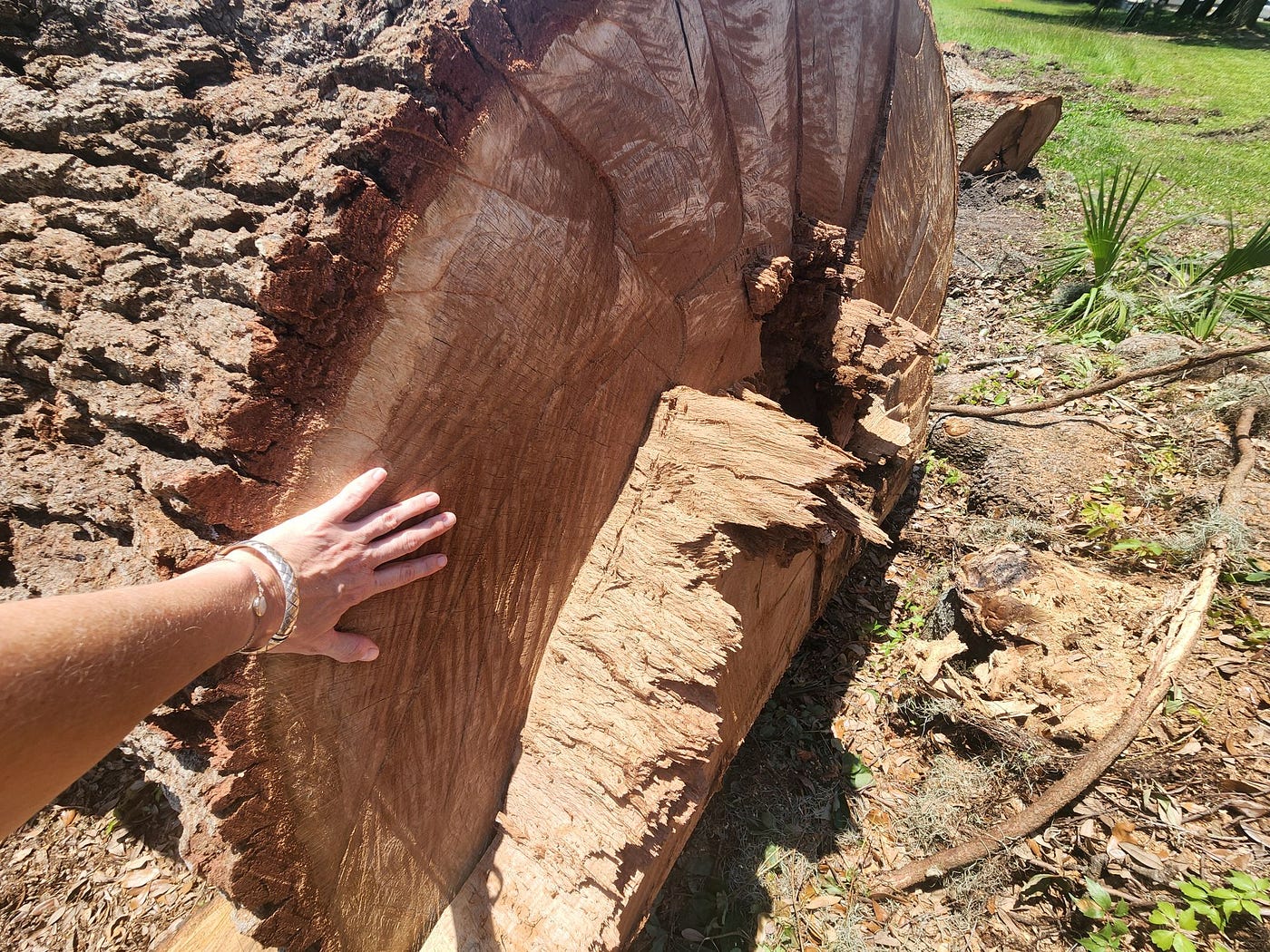
The controversy surrounding the removal of this majestic live oak runs even deeper. The planned construction of the Home2 Suites by Hilton will also displace a dedicated memorial site — one that honors the lives lost during one of the darkest chapters in Mississippi’s history.
On August 17, 1968, Hurricane Camille devastated the Gulf Coast, claiming the lives of 172 people who either died or went missing. To honor their memory, a memorial was erected on August 17, 2001, the 32nd anniversary of the storm’s landfall. For years, it has stood as a solemn reminder of the human cost of nature’s fury and the resilience of the community that endured it.
As you can see from the photo below, the Hurricane Camille Memorial was strategically placed sitting below the frame of a simple structure that marks the space where the Church of the Redeemer once stood. It is a gentle reminder that the soul’s lost that tragic day will forever be cradled in the Redeemer’s grace and benevolent love.
Now, due to this development, this reverent and cherished memorial is set to be dismantled and relocated — its original placement sacrificed in the name of commercial expansion. While plans may exist to reassemble it elsewhere, its displacement adds yet another layer of loss for a community still reeling from the destruction of their beloved live oak.

The Hurricane Camille memorial also shares the property with the famous oak in Biloxi with a unique ring formation known as the “Ring in the Oak.” This tree is a landmark associated with a Biloxi Indian legend about a maiden, a Natchez warrior, and a ring miraculously appearing in the tree’s branches after a storm. The tree is located in the yard of the Church of the Redeemer.
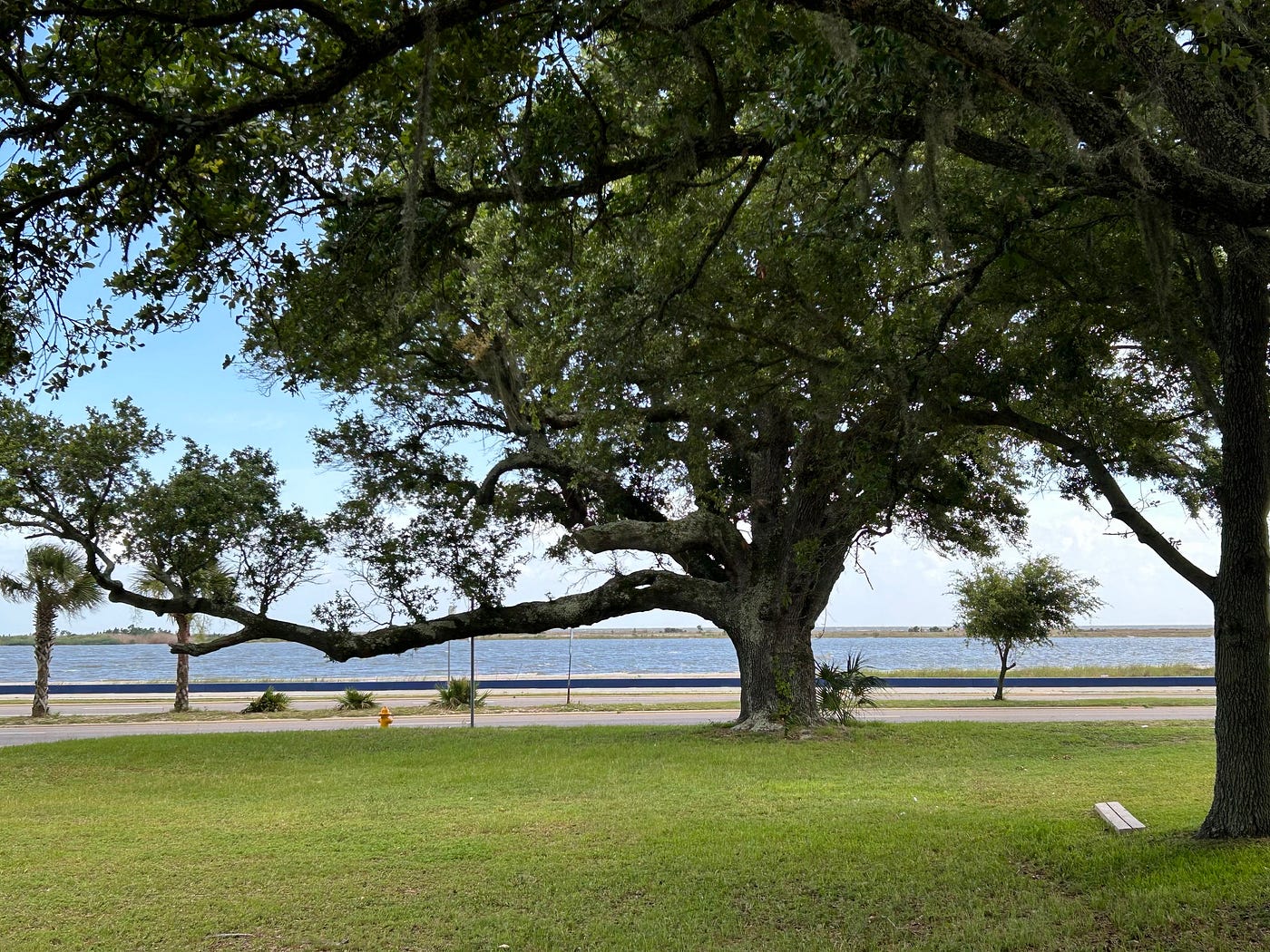
Is nothing sacred? According to Mr. Jerry Creel, the City of Biloxi’s appointed Director ofCommunity Development and interim Arborist, apparently not.
In early June, 2025, Mr. Creel fast tracked and quietly signed off on a permit allowing the removal of 16 to 18 oak trees, originally identified as live oaks, some of the most protected trees in Biloxi.
According to Biloxi Politics Uncensored, “He didn’t document their size. He didn’t verify the species. And most critically, he skipped the one step that the law makes absolutely clear: a Tree Hearing is required when removing five or more protected trees. But why bother with hearings and public input when you can just fast-track the chainsaws?”
To add insult to injury, as the City of Biloxi has yet to hire a full-time, credentialed arborist who could protect these live oaks from further destruction, Mr. Creel, who has no credentials, was appointed as the Interim Arborist.
Nothing can truly replace the shelter, beauty, and sense of place that this cherished live oak provided to the community. But perhaps the upcoming Tree Committee meeting on July 2 can be the starting point for residents to demand accountability and justice for her loss.
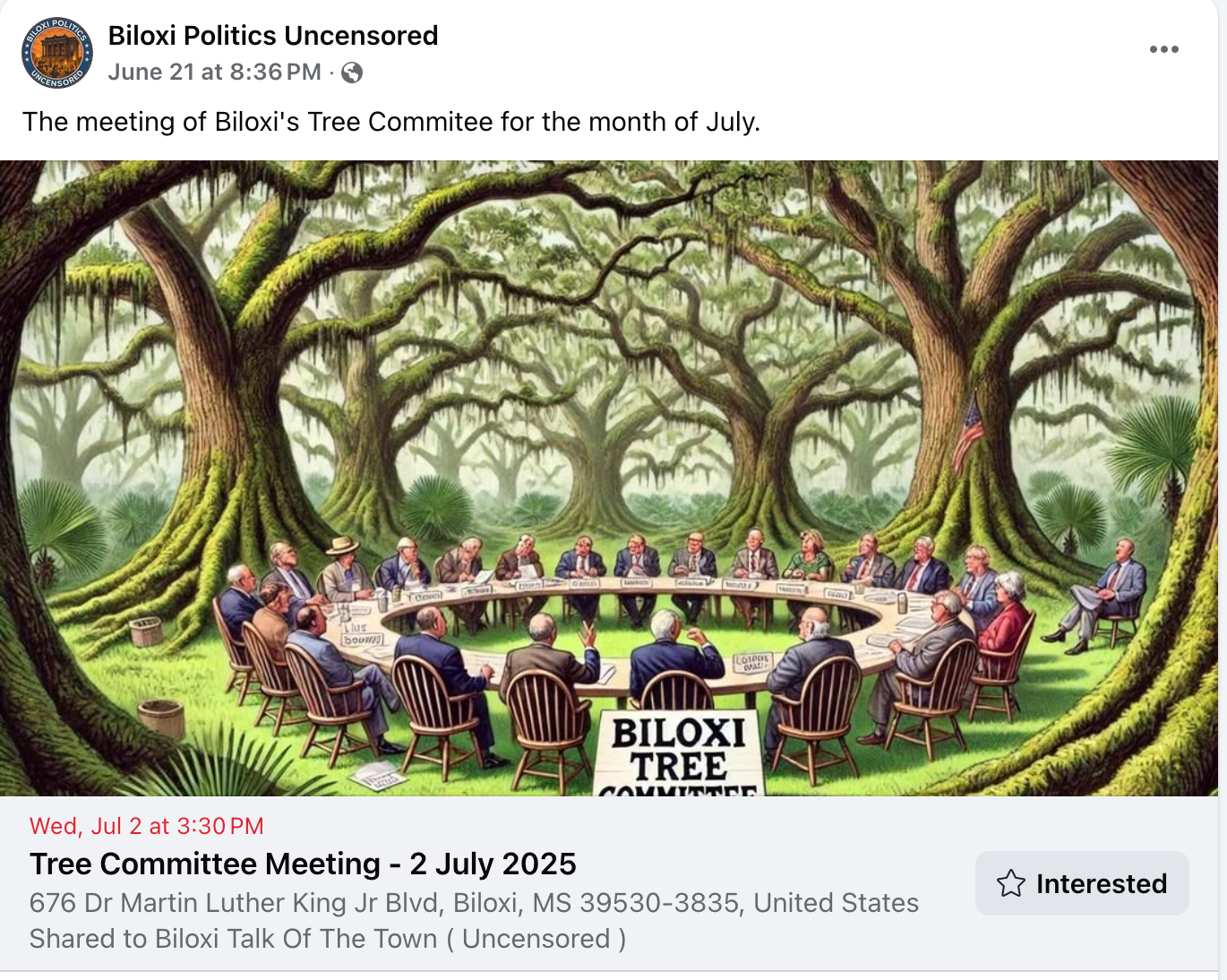
Many unanswered questions remain. Will the Patels be held responsible in any meaningful way? What role did the City play — and did they properly vet this development group before moving forward? Or will this company be allowed to continue disrupting and displacing a community that has already endured decades of hardship from hurricanes and extreme weather?
There are other hotel developments planned farther up Beach Boulevard — so why was this tree, in this location, sacrificed? Biloxi already boasts a wide range of hotels and resorts to accommodate visitors. What message does it send when preservation takes a back seat to profit?
This isn’t just about one tree — it’s about what kind of future Biloxi wants to build, and who gets a voice in shaping it.
